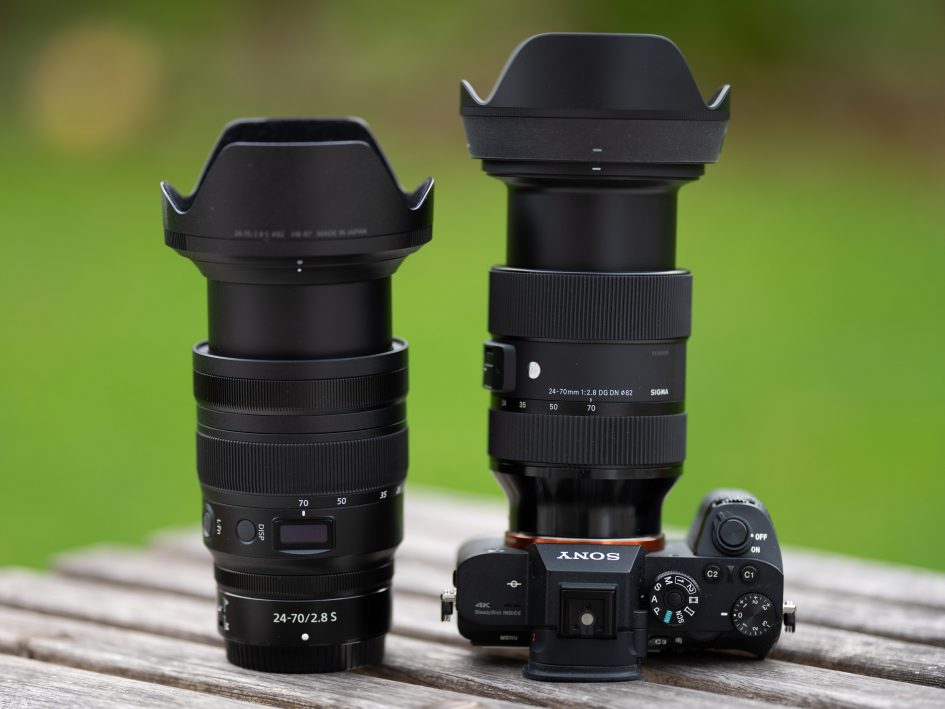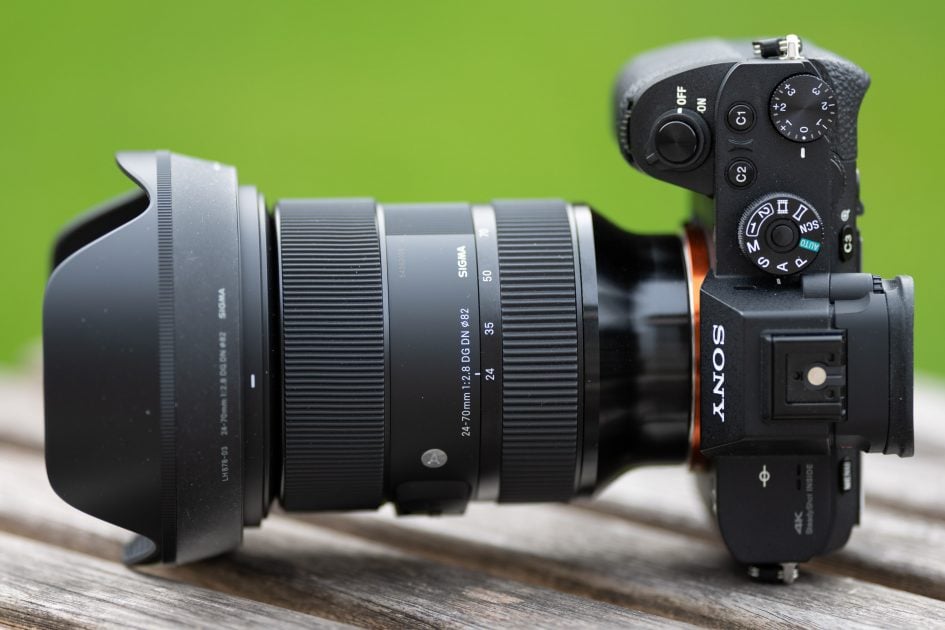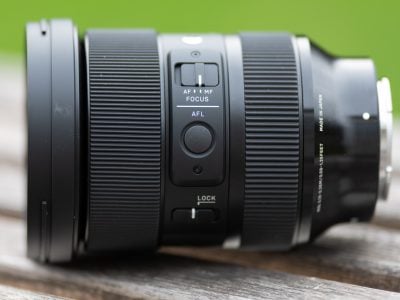Sigma 24-70mm f2.8 DG DN Art review
-
-
Written by Thomas
Verdict
With their third lens natively designed for full-frame mirrorless cameras and available in Sony E or Leica L-mount, Sigma is aiming at the enthusiast and professional who desires a large aperture 24-70mm lens as a workhorse without breaking the bank: The zoom range is fitting for a wide variety of photographic tasks from reportage to street photography, landscape and architecture. The large aperture helps gather enough light in challenging situations and give some background isolation to the subject. In my tests the Sigma 24-70mm f2.8 DG DN Art has proven that it is a well designed lens: It is sharp within the APS-C image-circle, has no longitudinal color aberrations, shows little veiling glare in contra-light situations, and has a pretty soft Bokeh plus reliable autofocus. And Sigma offers the unique option to get the lens-mount swapped.
What’s not to like? The Sigma becomes gradually softer at closer focus distances where it also develops quite some field curvature. This may not be relevant when shooting scenes with no important content outside the APS-C image circle. But it is a bit bothersome for a lens you’d want to use for many different types of scenes.
Let’s have a closer look at how the new lens compares to other alternatives.

Above: Nikon Z 24-70mm f2.8 S (left) vs. Sigma 24-70mm f2.8 DG DN Art (right)
Compared to Sony FE 24-70mm f2.8 GM
The Sony FE 24-70mm f2.8 GM is a well-rounded package which produces sharp to very sharp and contrasty images with only little color aberrations and a pretty nice Bokeh. Its features include a zoom-lock, lockable lens-hood, well padded lens case plus strap, and a function button which can be used for focus-lock or other assignable functions. In that it is pretty comparable to the Sigma. Its distortions are well corrected (through lens profile) and its close-up performance down to a magnification of 1:4 produces clearly sharper results than from the Sigma. Plus the zoom keeps focus throughout its range – unless you zoom out to 24mm. But the Sony becomes gradually softer at the longer end with 70mm being its weakest focal length and while it normally produces the sharper full-frame corner the Sigma often has a bit more acuity in the center. And the Sigma also has the more reliable auto-focus. All-in-all both lenses offer comparable performance and features so in the end the much lower price of the Sigma makes it the better offer.
For more details see my Sony FE 24-70mm f2.8 GM review where the lens got a recommendation.
Compared to Tamron 28-75mm f2.8 Di III
The Tamron 28-75mm f2.8 Di III RXD is a valuable addition to the full-frame E-Mount market, that’s wisely pitched between Sony’s entry-level FE 28-70mm f3.5-5.6 kit zoom and the high-end FE 24-70mm f2.8 G Master. The Tamron is stunningly sharp in the APS-C image-circle and delivers a close-up performance which is clearly better than from the Sigma. It’s smaller and lighter and has a lower price than the Sigma too which makes the Tamron a viable option for those who can only dream of f2.8 zooms and were otherwise heading to the budget kit lens. It becomes softer in the full-frame corners but that is a weakness it shares with the Sigma. But the Sigma produces the softer Bokeh and covers a wider angle of view at 24mm than the Tamron which starts at 28mm. This may be the decisive factor: If you want wide the Sigma covers 84 degrees at the short end while the Tamron covers only 75 degrees. This might sway your vote toward the Sigma – unless you consider getting the Tamron 17-28mm f2.8 Di III RXD too which nicely covers the very wide angles.
For more details see my Tamron 28-75mm f2.8 Di III review where it got a Recommended.
Compared to Nikon Z 24-70mm f2.8 S
The Nikon Z 24-70mm f2.8 S is the odd lens in this comparison as it comes in Nikon’s Z-mount which is not offered by Sigma – yet. But Sigma has mastered the Nikon F-mount in the past and I’m quite certain they will adapt their lenses to Nikon Z-mount (and Canon RF-mount) in the future. So it is interesting to see how Sigma’s new zoom fares against Nikon’s professional standard zoom for their mirrorless system. Physically the Nikon and Sigma are of similar size and weight and both have an additional function button. And while both offer a lockable lens hood the Sigma has an additional switch to lock their zoom at the 24mm position. The Nikon scores with its OLED display for distance/dof, aperture or focal length and a function ring which can be assigned exposure compensation or operation of the aperture. The Nikon also sports a special coating at the front lens to repel water, dust, and dirt, and make for easier cleaning. But then the Nikon is clearly more expensive than the Sigma. Optically both lenses perform very similarly – at long distances. But at closer focus distances the Nikon’s sharpness is superior. All-in-all Nikon’s Z 24-70mm f2.8 S remains the best 24-70mm zoom for your Nikon Z bodies even if Sigma should offer their 24-70mm f2.8 DG DN Art with Z-mount in the future.
For more details see my Nikon Z 24-70mm f2.8 S review where it came Highly Recommended.

Sigma 24-70mm f2.8 DG DN Art final verdict
The Sigma 24-70mm f2.8 DG DN Art is a viable alternative to the original 24-70mm f2.8 lenses from Sony and Panasonic – not to mention Canon and Nikon, should Sigma develop RF and Z-mount versions. Although the lens comes at a much lower price Sigma has designed it well: The lens is sharp within the APS-C image-circle, has no longitudinal color aberrations, shows little veiling glare in contra-light situations, and has a reliable autofocus. Unfortunately the Sigma becomes gradually softer at closer focusing distances right down to pretty mushy results at minimum object distance. This may make the lens miss out on our top award, but it still clearly earns a recommendation.
Good points:
- Constant f2.8 focal ratio.
- Sharp and contrasty in the APS-C image circle.
- No longitudinal color aberrations.
- Good black levels in contra-light situations.
- Reliable AF operation.
- Can swap mounts (at a cost) between Sony E and Leica L-mount.
Bad points:
- Field curvature and softer performance at closer distances.




